If you want your mirrors (Figure 1) to last for many years, they must be installed and maintained properly, and when it does become time to buy a new mirror it is important that the old one be disposed of correctly.
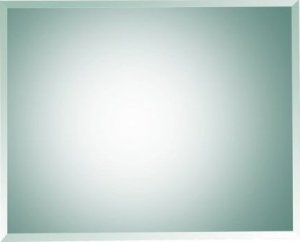
Figure 1 - Frameless wall mirror
Mounting Frameless Mirrors:
Mirrors are heavy, and in order to ensure that they remain on the wall, they must rest on a solid structure.
Mechanical fasteners:
There are a variety of fasteners, (mirror clips) that have been specifically designed to hold mirrors upright and flush with a wall surface. The four most common types of mirror clips are:
- Plastic Mirror Clips (Figure 3) - fastening screws are visible
- "Z" Mirror Clips (Figure 4) - fastening screws are visible
- "J" Mirror Clips (Figure 5) - fastening screws are hidden
- Adjustable Mirror Clips (Figure 6) - fastening screws are hidden
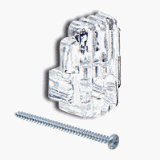
Figure 3 - Plastic mirror clip
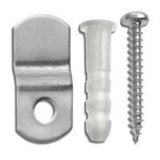
Figure 4 - "Z" mirror clip
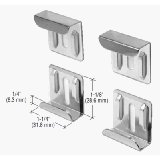
Figure 5 - "J" mirror clip

Figure 6 - Adjustable mirror clip
It is important to remember that the mirror clips must be properly fastened to the wall using proper anchors for the screws, depending on the wall construction. Four clips, two on the top and two on the bottom are usually sufficient to hold the mirror in position, however if you have a large, heavy mirror you may wish to add a third set.
Additional information on screw anchors.
The biggest advantage to mechanical fasteners is that they allow for the mirror to be conveniently removed at a later date.
Adhesives:
Mirrors can be mounted using adhesives (Figure 7) rather than mechanical fasteners. With adhesives the mirror is permanently mounted to the wall. Removal, of the mirror, will generally damage the surface of the wall.
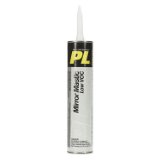
Figure 7 - Mirror adhesive
Choose an adhesive that is specifically formulated to hold a mirror to the surface, generally painted drywall, that you are attaching the mirror too.
When using adhesives to mount the mirror, it may be necessary to mechanically hold the mirror in position until the adhesive sets.
Note: Generally adhesives should not be applied to freshly painted surfaces as the paint takes some time to bond to the wall.
Always follow the manufacturer’s instructions for application of their specific product.
Mounting Framed Mirrors:
Framed mirrors will usually have integral mounting clips or brackets of some kind. If they do not, they are usually mounted using picture frame mounting fasteners.
Repairing Scratched Mirrors:
Mirrors can be scratched and before you call in a mirror expert or throw the scratched mirror away you can attempt to economically remove the scratch by rubbing a small amount of regular (not gel) toothpaste into the scratch and then polishing the surface with a soft cloth.
Cleaning Mirrors:
Using ammonia based cleaners can destroy a mirror. Ammonia creates deterioration to the silver nitrate reflective surface of the mirror.
There are a number of specially formulated mirror cleaners some are eco-friendly.
Use a soft cloth to spread and wipe the cleaner from the surface of the glass.
It should be noted than many paper toweling products are abrasive and will actually leave fine scratch marks on the glass.
Mirror Disposal:
While mirrors are perfectly safe when they hang on your wall, they are manufactured using some highly toxic compounds and chemicals. These toxic chemicals and compounds can be released when deposited into landfill sites.
Check with your local municipal waste department for instructions on the correct method of disposing of mirrors.
